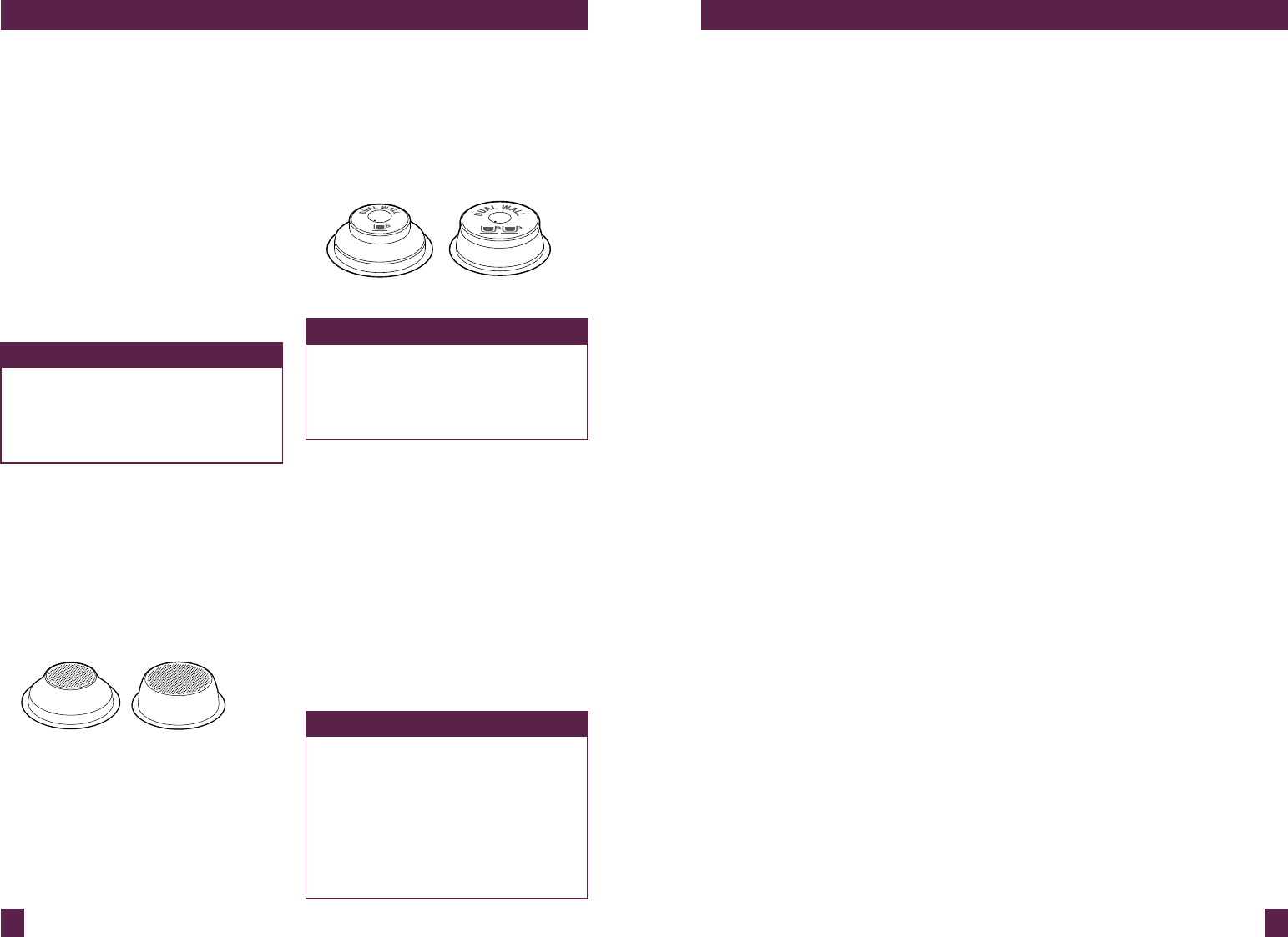
22 23
PAge heAder..... PAge heAder.....
COFFEE MAKING TIPS & PREPARATION
PRE-HEATING
Heating your cup or glass
A warm cup will help maintain the coffee’s
optimal temperature. Pre-heat your cup by
rinsing with hot water from the hot water
outlet and place on the cup warming tray.
Heating the portafilter and filter basket
A cold portafilter and filter basket can
reduce the extraction temperature enough
to significantly affect the quality of your
espresso. Always ensure the portafilter and
filter basket are pre-heated with hot water
from the hot water outlet before initial use.
NOTE
Always wipe the portafilter and filter
basket dry before dosing with ground
coffee as moisture can encourage
‘channeling’ where water by-passes the
ground coffee during extraction.
SELECTING A FILTER BASKET
Single Wall Filter Baskets
Use Single Wall filter baskets if grinding
fresh whole coffee beans.
Single Wall filter baskets allow you to
experiment with grind, dose and tamp to
create a more balanced espresso.
1 CUP 2 CUP
Dual Wall Filter Baskets
Use Dual Wall filter baskets if using
pre-ground coffee.
Dual Wall filter baskets regulate the
pressure and help to optimize the
extraction regardless of the grind, dose,
tamp pressure or freshness.
1 CUP 2 CUP
NOTE
Regardless of whether you use Single
Wall or Dual Wall filter baskets, use the
1 CUP basket when brewing a single cup
and the 2 CUP basket when brewing two
cups or a stronger single cup or mug.
The provided filter baskets are designed for:
1 CUP basket = approx. 8–10g.
If using pre-ground coffee, this is approx.
2 level scoops of the provided coffee scoop.
2 CUP basket = approx. 15–18g.
If using pre-ground coffee, this is approx.
3 level scoops of the provided coffee scoop.
If using freshly ground coffee, this is approx.
4 level scoops of the provided coffee scoop.
The reason for this difference is that pre-
ground coffee is often coarser and hence
occupies more volume than coffee that is
more finely ground.
NOTE
You may need to experiment with how
much coffee is inserted into the filter
basket or how long the grinder needs
to run to achieve the correct dose. For
example, when using a finer espresso
grind with the Single Wall filter baskets,
you may need to increase the grind
amount to ensure the filter basket is
correctly dosed.
COFFEE MAKING TIPS & PREPARATION
THE GRIND
If grinding coffee beans, the grind size
should be fine but not too fine. The grind size
will affect the rate at which the water flows
through the ground coffee in the filter basket
and the taste of the espresso.
If the grind is too fine (looks like powder and
feels like flour when rubbed between fingers),
the water will not flow through the coffee
even when under pressure. The resulting
espresso will be OVER EXTRACTED, dark in
color and bitter in flavor.
If the grind is too coarse the water will flow
through the ground coffee in the filter basket
too quickly. The resulting espresso will be
UNDER EXTRACTED and lacking in color
and flavor.
COFFEE DOSE AND TAMPING
Follow the instructions for:
1. Setting the Grind Size, page 13.
2. Setting the Grind Amount, page 13.
3. Selecting the Filter Size, page 13.
4. Automatic Dosing or Manual Dosing,
page 13–14.
5. Tamping the Ground Coffee, page 14.
6. Trimming the Dose, page 14.
PURGING THE GROUP HEAD
Before placing the portafilter into the group
head, run a short flow of water through the
group head by pressing the 1 CUP button.
This will purge any ground coffee residue
from the group head and stabilize the
temperature prior to extraction.
INSERTING THE PORTAFILTER
Place the portafilter underneath the group
head so that the handle is aligned with the
INSERT position. Insert the portafilter into
the group head and rotate the handle towards
the center until resistance is felt.
EXTRACTING ESPRESSO
• Place pre-warmed cup(s) beneath the
portafilter and press the 1 CUP or 2 CUP
button for the desired volume.
• Due to pre-infusion time, the espresso
will not start to flow immediately.
• As a guide, the espresso will start to flow
after 4–7 seconds (infusion time) and
should be the consistency of dripping
honey.
• If the espresso starts to flow after less
than 3 seconds you have either under
dosed the filter basket and/or the
grind is too coarse. This is an UNDER-
EXTRACTED shot.
• If the espresso starts to drip but doesn’t
flow after 8 seconds, then you have either
over dosed the filter basket and/or
the grind is too fine. This is an
OVER-EXTRACTED shot.
A great espresso is about achieving the
perfect balance between sweetness, acidity
and bitterness. The flavor of your coffee will
depend on many factors, such as the type
of coffee beans, degree of roast, freshness,
coarseness or fineness of the grind, dose of
ground coffee, and tamping pressure.
Experiment by adjusting these factors
just one at a time to achieve the taste
of your preference, see ‘Extraction Guide,’
page 25.
TEXTURING MILK
There are two phases to texturing milk. The
first is stretching the milk to aerate it and
the second is swirling the milk to make it
silky smooth. These two operations should
blend into one.
• Always start with fresh cold milk.
• Fill the jug just below the “V” at the
bottom of the spout.
• Position the steam wand tip over the
drip tray and turn the STEAM/HOT
WATER dial to the STEAM position.


















